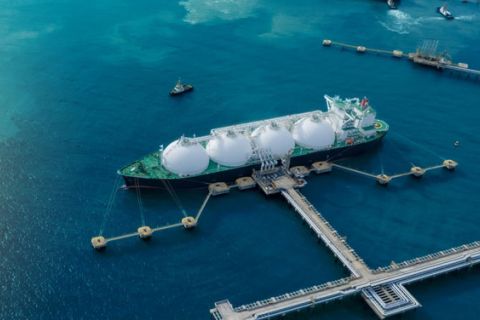The outlook for U.S. shale oil is slightly more “optimistic” due to rising prices and output will recover further in the second half of 2021, OPEC said on Jan.14, in a sign its policy of cutting output is helping rivals pump more.
U.S. shale producers are not part of a pact between OPEC nations and others including Russia—the so-called OPEC+—to reduce their output to support prices and reduce oversupply.
U.S. total oil supply will rise by 370,000 barrels per day (bbl/d) in 2021 to 17.99 million barrels per day (MMbbl/d), OPEC said in a monthly report, up 71,000 bbl/d from the previous forecast.
A significant rebound in shale could hamper efforts by OPEC and its allies to support the market. Oil prices hit an 11-month high above $57 a barrel this week, supported by OPEC+ supply restraint and a voluntary cut by Saudi Arabia.
“The 2021 supply outlook is now slightly more optimistic for U.S. shale with oil prices increasing, and output is expected to recover more in the second half of 2021,” OPEC said.
Also in the report, OPEC left its forecast for world demand unchanged, saying oil use will rise by 5.90 MMbbl/d this year to 95.91 MMbbl/d, following a record 9.75 MMbbl/d contraction last year due to the pandemic.
OPEC said there was upside potential in its forecast of 4.4% economic growth in 2021, but new coronavirus variants, rising infections and a slow start to vaccination programs may cloud the recovery at least for the first quarter.
“While a strong global economic recovery in 2021 remains very likely, the depth and magnitude of this year's rebound remains uncertain,” OPEC said.
“The forecast will be thoroughly reviewed once more in the coming month.”
Small Shale Gain
For now, the shale rebound is small. OPEC expects U.S. tight crude output, another term for shale, to rise by 70,000 bbl/d this year to 7.37 MMbbl/d and left its non-OPEC supply forecast steady overall.
But rapid growth in the non-conventional oil supply has caused problems for OPEC in the recent past.
Rising shale output, encouraged by OPEC’s policy of cutting supply to support prices, helped create a glut during 2014-2016. This glut eventually prompted the creation of OPEC+, which began to restrain output in 2017.
OPEC+ cut supply by a record 9.7 MMbbl/d last year and is pumping an extra 500,000 bbl/d in January under a plan to unwind the curbs gradually. Most producers will hold steady in February and Saudi Arabia is cutting output by 1 MMbbl/d next month and March.
The report showed OPEC output is increasing already. Output rose by 280,000 bbl/d to 25.36 MMbbl/d in December, it said, driven by Libya, an OPEC member exempted from making cuts, plus quota-bound countries Iraq and the United Arab Emirates.
The group forecast demand for its crude will be 27.2 MMbbl/d this year, also unchanged from last month. That would still allow for higher average OPEC production in 2021.
Recommended Reading
US NatGas Futures Hit Over 2-week Low on Lower Demand View
2024-04-15 - U.S. natural gas futures fell about 2% to a more than two-week low on April 15, weighed down by lower demand forecasts for this week than previously expected.
US Natgas Prices Hit 5-week High on Rising Feedgas to Freeport LNG, Output Drop
2024-04-10 - U.S. natural gas futures climbed to a five-week high on April 10 on an increase in feedgas to the Freeport LNG export plant and a drop in output as pipeline maintenance trapped gas in Texas.
CERAWeek: Two Minutes with EQT’s Toby Rice on Energy Security
2024-03-22 - EQT Corp. President and CEO Toby Z. Rice spoke to Hart Energy on March 20 on the sidelines of CERAWeek by S&P Global to discuss natural gas infrastructure bottlenecks, energy security and the company’s advances on LNG.
Antero Poised to Benefit from Second Wave of LNG
2024-02-20 - Despite the U.S. Department of Energy’s recent pause on LNG export permits, Antero foresees LNG market growth for the rest of the decade—and plans to deliver.
Rystad Sees Little Support for Henry Hub in Coming Weeks
2024-01-26 - Rystad Energy sees little support for Henry Hub prices in the U.S. as dry gas production rises after the Jan. 17 Arctic freeze that impacted all of the Lower 48 states.



